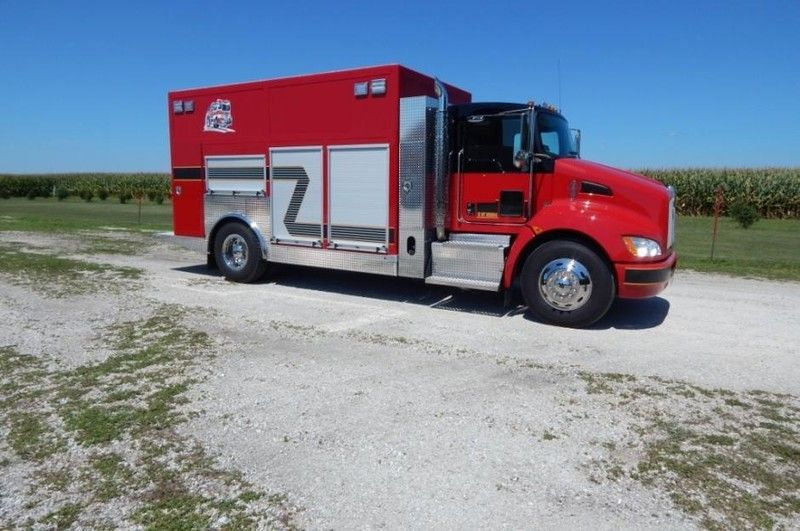-
Posts
564 -
Joined
-
Last visited
-
Days Won
9
Content Type
Forums
Gallery
Store
Everything posted by Shastapete
-
4.8" x 1.7" x 0.4" and 3 oz so about twice the footprint as the other ZMTs, but 2/3rds as thick - plus bendable, rubberized, internal battery, dual inputs...
-

Recommendations for a PA Setup for an Outdoor Movie Screening
Shastapete replied to Simon Barz's topic in Equipment
Do you intend to just stick to stereo playback? Quad? LCR? 5.1? You'd not do wrong with a pair of QSC K8.2s, they're small and powerful. The really important question is how large is the listening area (not so much how many people, bodies do absorb sound, but you can ignore it for this case) The Dolby spec says you need 105dB peak SPL at the "listening position" (center of the room, 2/3rds of the way back) Once you know the distance to the speakers, you can calculate the power of the speakers you need to meet spec (remember inverse square loss!) Once you get the speaker power nailed down you can figure out your speakers -

4 channels audio over radio camera on OB
Shastapete replied to Lancashire soundie's topic in Cameras... love them, hate them
It depends on the camera, or as ryanpeds suggested, embed the audio into the sdi stream after it comes out of the camera before it hits the transmitter. There's a box from Blackmagic design that can do it. $300 https://www.blackmagicdesign.com/products/miniconverters/techspecs/W-CONM-05 -

Setting Levels with Lavs>Mixer>Recorder?
Shastapete replied to Judge Crater's topic in General Discussion
As with most things wireless, Lectrosonics have a video. Obviously specifically about Lectros, but you should learn something. -
Taxi?
-
Another vote for a 19mm BBG, that works on short mics. That diameter has MKH8050, DPA4018C, and the Sanken CS-M1. All of which are short body mics that need a good wind solution. (The Cosi looks great, but steep at $529) If you can get close to $250 for the mount, bbg, and furry, you'll really have a winner.
-
the Cosi is up on Trew's site and is listed at $529. I was hoping for a $400 price point based on the LEO ($150) + Osix ($250) comment, and at $529 the step up to the Pianissimo isn't far away.
-
That's what their specs say for all of their mics. but they behave just fine with the 3.3v of Zaxcom. very slightly higher noise floor, but nothing that impacts normal use
-
And one more addendum, I don't offer a discount off the bat. But if there is negotiation, it is something that I'll be willing to commit to without much pushing... again as long as the rest of the rate is reasonable. For instance, if their equipment needs are $550/day but they say they only have $400/day for gear ($2000/week) I would say "Since the gig is X weeks long, I'd be willing to offer 4 day weeks - where the equipment rental is free on the 5th day" If they say yes to this, I still talked them up $200/week on their rate, and built in protections where if the last week runs short, they won't get a prorated discount.
-
Generally when quoting a rate for a client I'll suss out their equipment needs before I'll give them a rate. Sure, I have a "usual basic package" that is 2 wireless, boom and recorder that is $300/day, but if the client says in the original call that they only need 1 wireless, a TC box, a slate, and 2 IFB then I could give them a package rate for that, usually with a slight discount from a true a la carte rate. They feel like they are getting a deal, and it puts a round number on the invoice. Then when they comeback later if they need more they can order off the menu. Also, rental houses tend to give heavy discounts on longer rentals. I won't do 3 day weeks, but I might do 4 day weeks if the gig is 3+ weeks long (no 10 day months either!) but this is only if they're not fighting me on what a normal rental rate is.
-
The prevailing rate for timecode is $50/thing/day so if you have 2 cameras needing lockits, and a timecode slate that's $150/day added to the invoice for a la carte items. In general, the popular way of coming up with rental rates in our community is roughly 2% of the purchase price as a daily charge as a starting point. But higher if it isn't an item you constantly control (comtek, timecode device, slate) and therefor subject to higher wear and tear OR something specialized that is rarely needed. The rental fees not only cover the cost to buy the device, but also pay for maintenance, repair, insurance, storage, and depreciation of that device. Talk to the other mixers in your market and look at the rental rate sheets from the usual suspects to put together your price list. Everyone's list doesn't have to be exact, but as long as we're all in the same ballpark all is good
-
to expand on the answer Jeff gave, the F8(n) can switch between PFL (Pre-fader listen) and Solo modes. Solo is post fader listen. PFL is used for checking sources and signals before being added to a mix, so you can have a fader down and listen to a mic to make sure all is well before that person goes into their scene or whatever. Solo is more of a music or post tool, where you want to briefly isolate a track in-situ at the same level it is in the mix.
-
Bias Power and amplification are two different things. Bias Power is like Phantom power... which won't make your antenna signal 'louder' or anything, and you shouldn't have a significant voltage drop of the "phantom power" in the coax run. That being said the Sharkie has a +18db Amp, which should be more than you need for most signal runs (unless you are using thin coax cable that are super lossy) As far as Bias power, Your Shures should be just fine but the Professional Wireless Bias-T is what I recommend http://www.professionalwireless.com/product/pws-dual-bias-t-wpower-supply/
-

Mercedes Metris OR Chevrolet Express 3/4?
Shastapete replied to Dalton Patterson's topic in Equipment
A used rescue truck will get you in and out of any set! (Jaws of Life optional) Or you could get one that has it's own ladder for your boom op -
Now I want hummus
-
I suppose you could replace your translator feed with a box from JK Audio attached to a phone and then dial in the translator (so they wouldn't need to be on site) but you still need to accommodate extra boxes in your kit, PLUS the issues of an always on cellphone call. In a similar situation, I would have probably done the same thing you did.
-
Never had an issue with those battery holders, many years on with both Eneloop (white and black) as well as powerex.
-
Looks good. What wire are you using? Also, always good to share is the diy dipole from Gordon at Lectrosonics
-

Rechargeable battery management on location
Shastapete replied to Philip Perkins's topic in Equipment
That Pelican 1060 with battery caddies is slick. -
2 of these connected together? https://www.amazon.com/LyxPro-positioned-different-interfere-applications/dp/B073X2SDMJ But what you probably should look for is a shorty XLR with a right angle on one end and some sort of wrap (K-tek squid?) or something to secure the TX to the pole
-
I have 2 of the lemo 3pin push/pull connectors and bought a 10 pack of the hirose connectors. I used the lemos to make a mic level input cables for my Zax TXs. So far they've held up great, haven't tortured them too much, but for the occasional times you need to record a board feed (and monitor) while running around they've been perfect. The hiroses have been keeping my bag powered for a while now. No issues there, but things don't get moved around too much in there to cause mechanical stress. Can't speak on their cable construction, as I've DIYed my own, but so far so good.
-
Like most BMD products, URSA was designed in vacuum without regard to how the real world works. Should it have src on its inputs? Yes. But also should Zaxcom be able to put out an industry standard 48kHz (as well as normal 23.98 LTC)? Yes.
-
This has been sitting in my ebay cart for awhile, https://www.ebay.com/itm/263022626523 I mostly do corporate interviews, so my rubber ducky antenna has worked fine for the past year as I'm at most 10 feet from talent.
-
I fly with my sound bag as my personal item, a carry on pelican as my "carry on," and if needed a larger pelican with more gear checked. I have a VdB small pole that fits easily in the carry on case, and if needed I can usually get the camera department to pack a longer pole in their tripod case. You need to be careful though, as your flight could be too full to accommodate your carry on, so you'll need to be ready to pull your batteries out and hand carry them on the plane. So because of this it is often worth it to buy the early boarding upgrade. Check with the airlines your are flying for both their rules as well as the destination countries rules. US rules limit you to 100 wH batteries as carry ons, with larger batteries if approved by the airline and pilot (they won't be)
-

Custom low profile right angle plugs - Seen this?
Shastapete replied to Ty Ford's topic in Equipment
for $10 a connector it certainly wins the cost vs. labor debate. The current $20 connectors were too much in my opinion. I've heard rumors that new mini connectors were coming from Cable Techniques, and now that they are here I'll be getting a couple to replace the "good enough" DIY monstrosities in my kit.

.png.279748a58a2b862b7aa5f3b84126e232.png)



